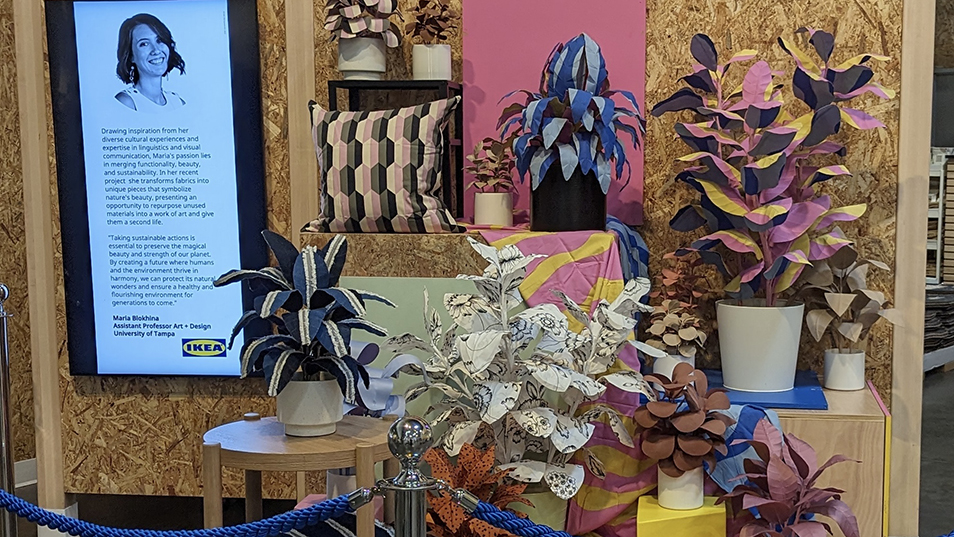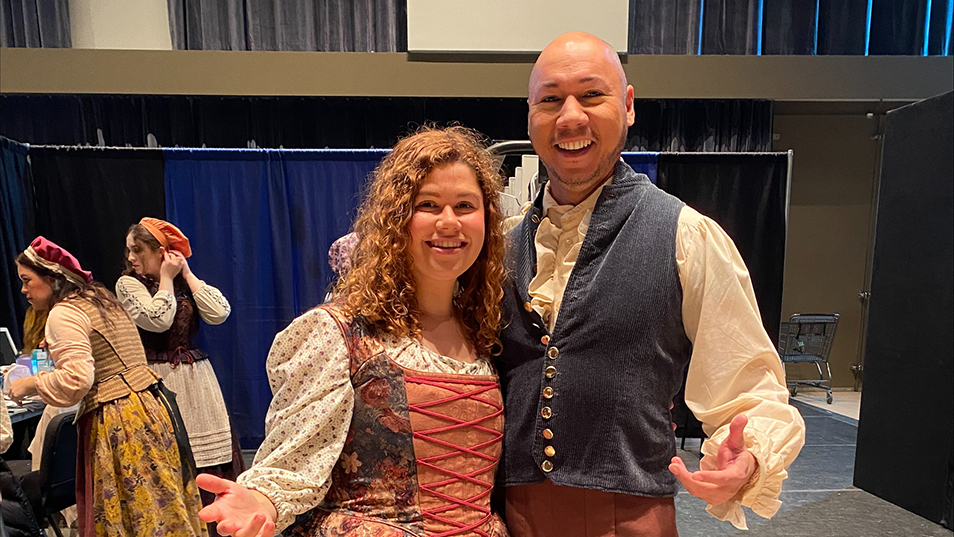Published: October 13, 2020
UT Instructor, Student Merge Old-School Printmaking With Tech in Labyrinth
When Ali Norman was first introduced to printmaking, it spoke to her love of history.
“Pretty much any of these super old techniques that take way too long and are ridiculous – those are the things that I like,” said Norman, a UT part-time art and design instructor. “I’m basically a huge nerd.”
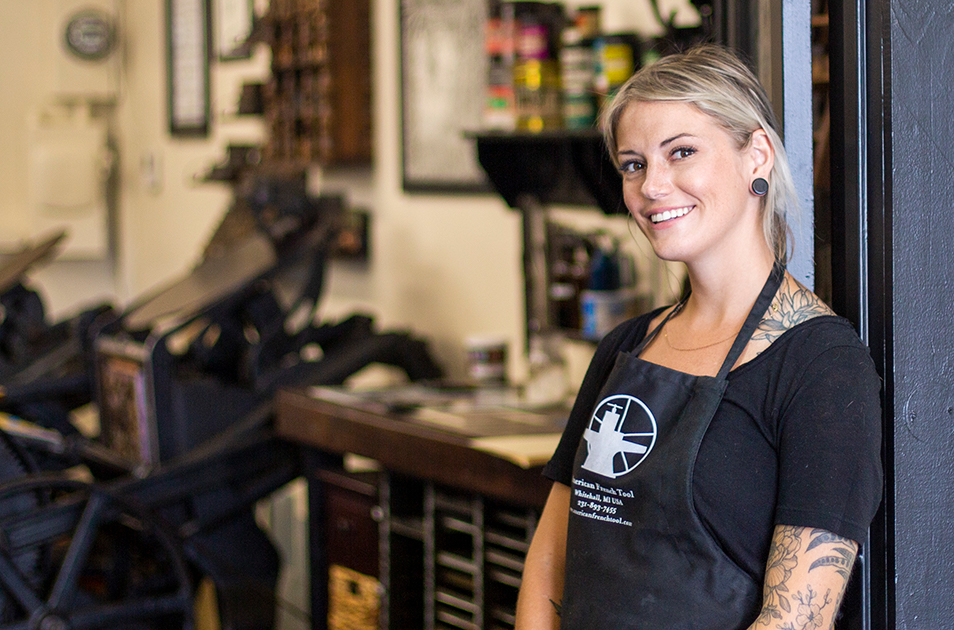
Ali Norman, a UT part-time art and design instructor, recently cut the ribbon on Labyrinth Studios, her printmaking and retail shop with small gallery in the Seminole Heights area of Tampa.
Printmaking involves transferring ink from a matrix (such as copper or polymer plates, stone or blocks of wood) to a sheet of paper or other material. Techniques include intaglio, lithography, letterpress and relief, and more contemporary technologies such as laser cutting and vinyl plotting.
Norman said she’s always liked chemistry and dark room techniques, as well as drawing. When she took printmaking as an elective in undergrad at the Savannah College of Art and Design, it changed her whole life.
“It was so extra and antiquated; it lit my fire in every way possible,” said Norman.
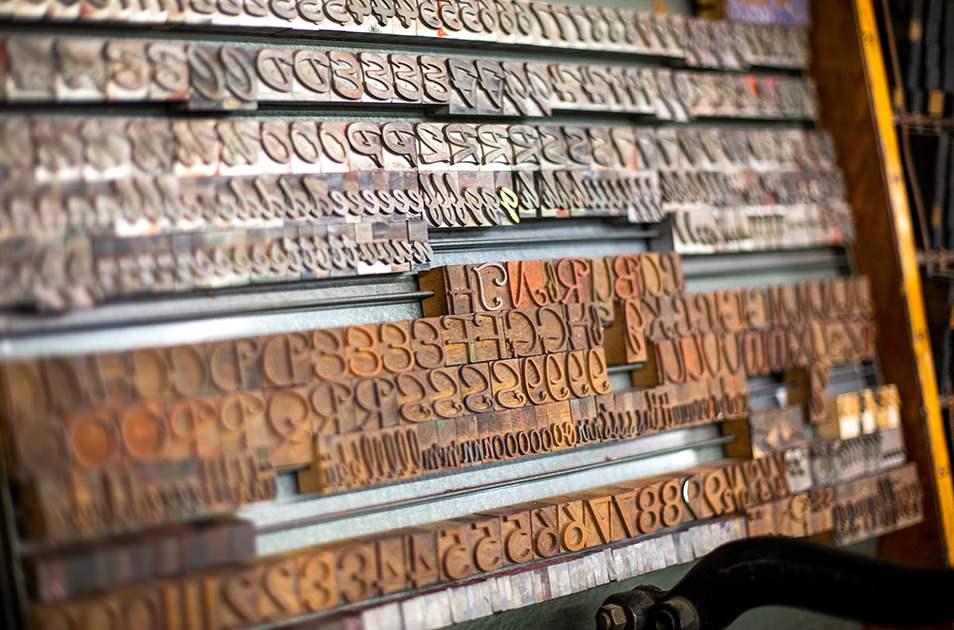
Printmaking involves transferring ink from a matrix (such as copper or polymer plates, stone or blocks of wood) to a sheet of paper or other material.
On Oct. 1, Norman held a grand opening for Labyrinth Studios, a fine art gallery, community printshop and maker space located just about three miles north of UT’s campus, with the focus of educating people on printmaking techniques (both traditional and high-tech) through workshops and providing access to equipment for emerging artists.
“(Printmaking) is a hugely tangible piece of our history. The printing press really allowed for the distribution of information in a whole new way,” Norman said. “We take that idea for granted because of the internet, but it’s also really relevant now because of the internet. In a lot of ways, those are similar concepts. I think it’s just the most magical thing in the world.”
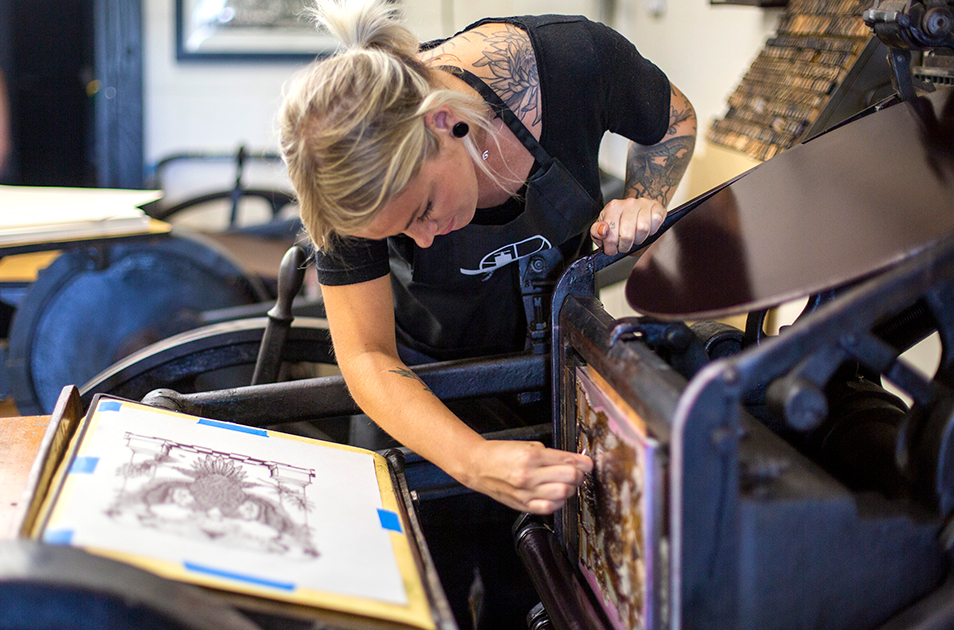
“Pretty much any of these super old techniques that take way too long and are ridiculous – those are the things that I like,” said Norman.
Norman’s enthusiasm for the art has transferred to at least one of her students. Eliza Henri ’22 (that’s her artistic moniker — Elizabeth Cohen is her birth name) has been working for Norman and also receiving internship credit, while at the same time becoming a fellow devotee to everything old school.
“I really thrive on professor-student relationships. The closer I am with a professor and the more willing a professor is to help me, the more involved I like to become in the process. That’s where I picked up my liking for printmaking because I had such a wonderful introduction into it,” said Henri, an art major with a concentration in printmaking and illustration.
“I’m in love with art processes. It’s very intimate when you’re so involved in every single step of creating, I think that it makes the resulting art pieces just so much more valuable and special,” Henri said. “I think that’s what defines fine art – the relationship you have with the creating.”
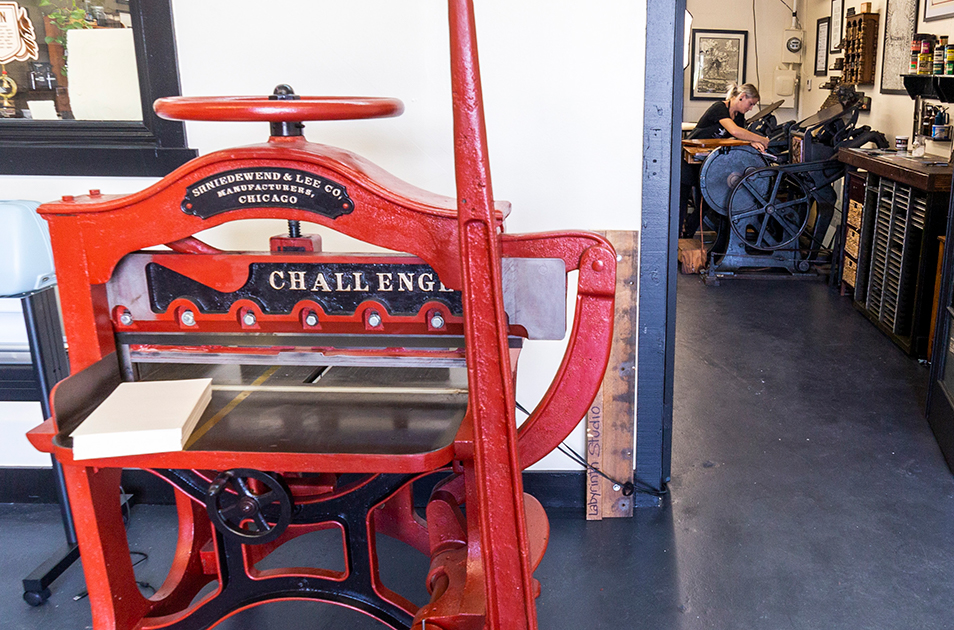
Eliza Henri ’22 helped Norman restore the 1880s paper cutter, pictured left, which had been in a barn for several decades before Norman received it this year.
It was on her very first day of school in her very first college class that Henri met Norman, and she’s taken every one of her classes since.
“I wholeheartedly just want my job to be art and creating,” Henri said. “That’s why I genuinely admire Ali so much because she’s been able to do all of this – having art as her career.”
Norman can’t say enough about her mentee either. “She’s hungry for knowledge, so willing to work and do anything just to be around the equipment and knowledge and history. She has a great work ethic, she’s really smart and talented.” Henri has helped set up Labyrinth Studios alongside Norman, including in the restoration of equipment such as the 1880s paper cutter that had spent the previous three decades under dust in a barn. She is now helping run the studios, which includes a retail shop.
“These are all skills that will guarantee she will be successful by the time she leaves college and give her the confidence to work as an artist in the real world,” Norman said.
Henri, of Orlando, has already sold some of her work through Labyrinth, prints she made through a process that involved digital drawings she created on her iPad, which were then converted into a polymer plate that she used on Norman’s 1923 Chandler & Price letterpress to create prints.
“I’m pretty sure I’m the only 20-year-old in the country who knows how to do that, which I think is pretty amazing,” Henri said. “I’m definitely hooked on letterpress now. At one point the printer got a little stuck and I was like, it’s an OG paper jam!” (OG is popular slang and acronym for “original gangster,” as in a classic way of doing something.)
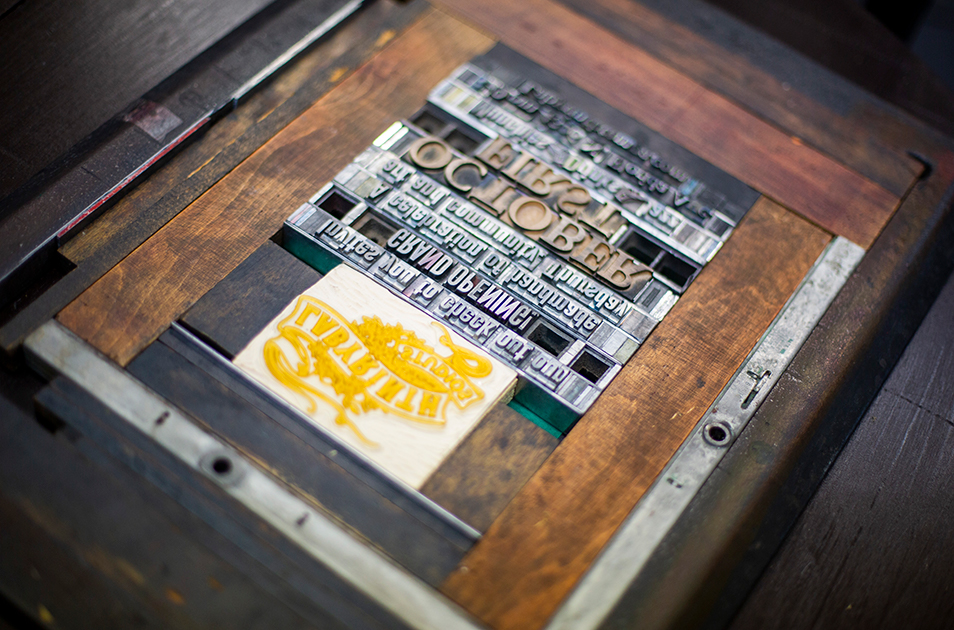
Labyrinth is home to several old-school machines such as an 1880s paper cutter and a 1923 Chandler & Price letterpress.
Henri was unsure about her career plans when she started UT, but that’s a different story now.
“Now that I’m more involved in the more professional side of the art industry because of Labyrinth and Ali, I can definitely see it all coming to fruition for me in the future,” she said. “I’m definitely starting to figure out how to make art my career, which is really relieving. I’m really grateful.”
Photos by Jaime Aelavanthara, assistant professor of art and design
Have a story idea? Contact Jamie Pilarczyk, Web Writer
Read more UT Life stories.
Subscribe to News and UT Life.

